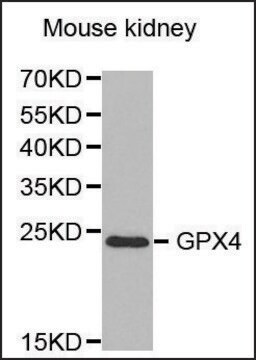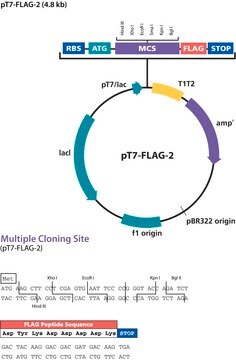OGS568
PSF-CMV-MUKAPPA - MOUSE KAPPA LIGHT CHAIN ANTIBODY PLASMID
plasmid vector for molecular cloning
Sinonimo/i:
cloning vector, expression vector, molecular cloning vector, plasmid, plasmid vector, snapfast vector, vector
About This Item
Prodotti consigliati
Forma fisica
buffered aqueous solution
PM
size 4576 bp
Selezione batterica
kanamycin
Origine di replicazione
pUC (500 copies)
Clivaggio proteico
no cleavage
Promotore
Promoter name: CMV
Promoter activity: constitutive
Promoter type: mammalian
Gene reporter
none
Condizioni di spedizione
ambient
Temperatura di conservazione
−20°C
Descrizione generale
Promoter Expression Level: This plasmid contains the mammalian CMV promoter to drive gene expression. We have tested all of our mammalian promoters in a range of cell types and CMV is consistently the strongest in those we have studied. However there are many reports of the CMV promoter demonstrating silencing by methylation in long-term culture.
Applicazioni
To enable this immediately upstream of the constant region coding sequence there is a BseRI restriction site. This is a type-IIS restriction enzyme that binds in one position (CAGCAG) and then cleaves a specific number of nucleotides away from the binding site regardless of the sequence at the cleavage point. We use this site in all of our antibody expression cassettes in the same position. In this plasmid cutting with BseRI will result in an overhang consisting of the first two nucleotides of the first codon of the constant region. This means that any variable region with the same overhang at its 3 prime end can be ligated into this plasmid when used in conjunction with any 5 prime site (NotI-NcoI). To add this overhang the variable region must be PCR amplified to contain any of the following sites at its 3 prime end: BseRI BsgI BtsI or BsrDI. By using this system it allows antibody variable regions to PCR amplified and fused to any of our constant region plasmids without having to re-synthesise the entire antibody expression cassette each time.
Sequenza
Risultati analitici
Prodotti correlati
Codice della classe di stoccaggio
12 - Non Combustible Liquids
Punto d’infiammabilità (°F)
Not applicable
Punto d’infiammabilità (°C)
Not applicable
Certificati d'analisi (COA)
Cerca il Certificati d'analisi (COA) digitando il numero di lotto/batch corrispondente. I numeri di lotto o di batch sono stampati sull'etichetta dei prodotti dopo la parola ‘Lotto’ o ‘Batch’.
Possiedi già questo prodotto?
I documenti relativi ai prodotti acquistati recentemente sono disponibili nell’Archivio dei documenti.
Il team dei nostri ricercatori vanta grande esperienza in tutte le aree della ricerca quali Life Science, scienza dei materiali, sintesi chimica, cromatografia, discipline analitiche, ecc..
Contatta l'Assistenza Tecnica.








